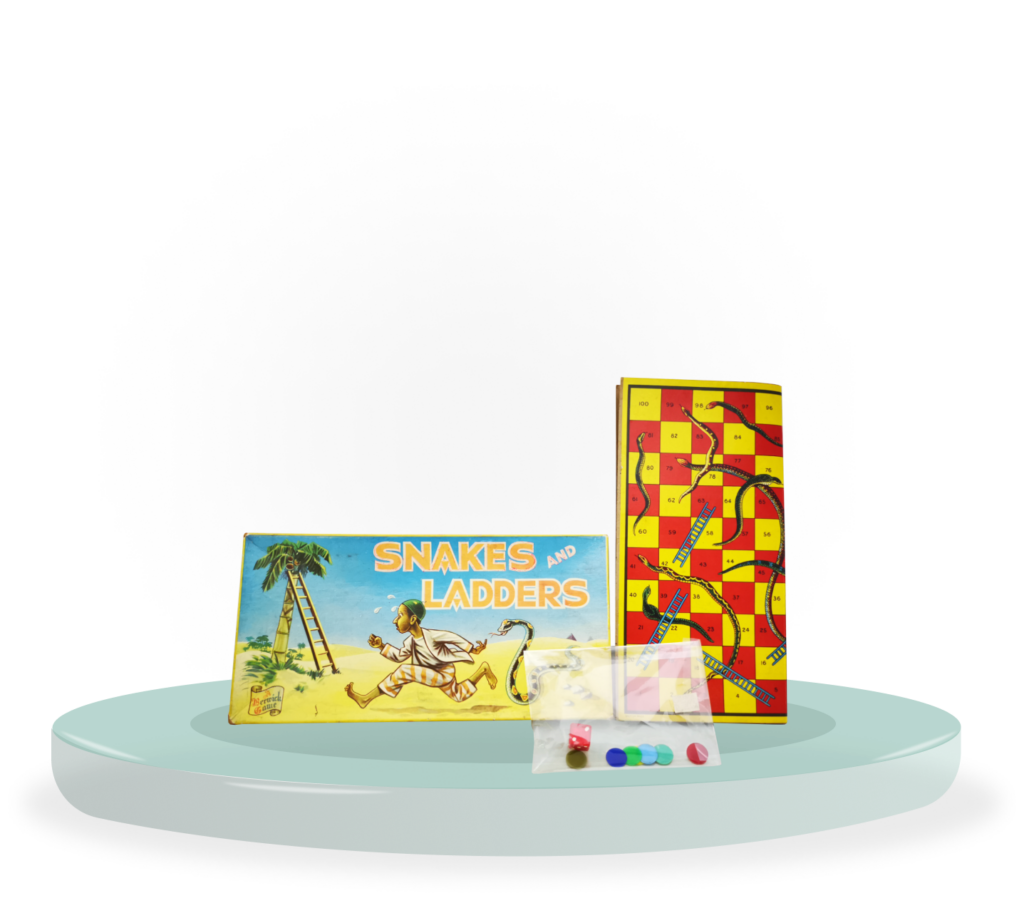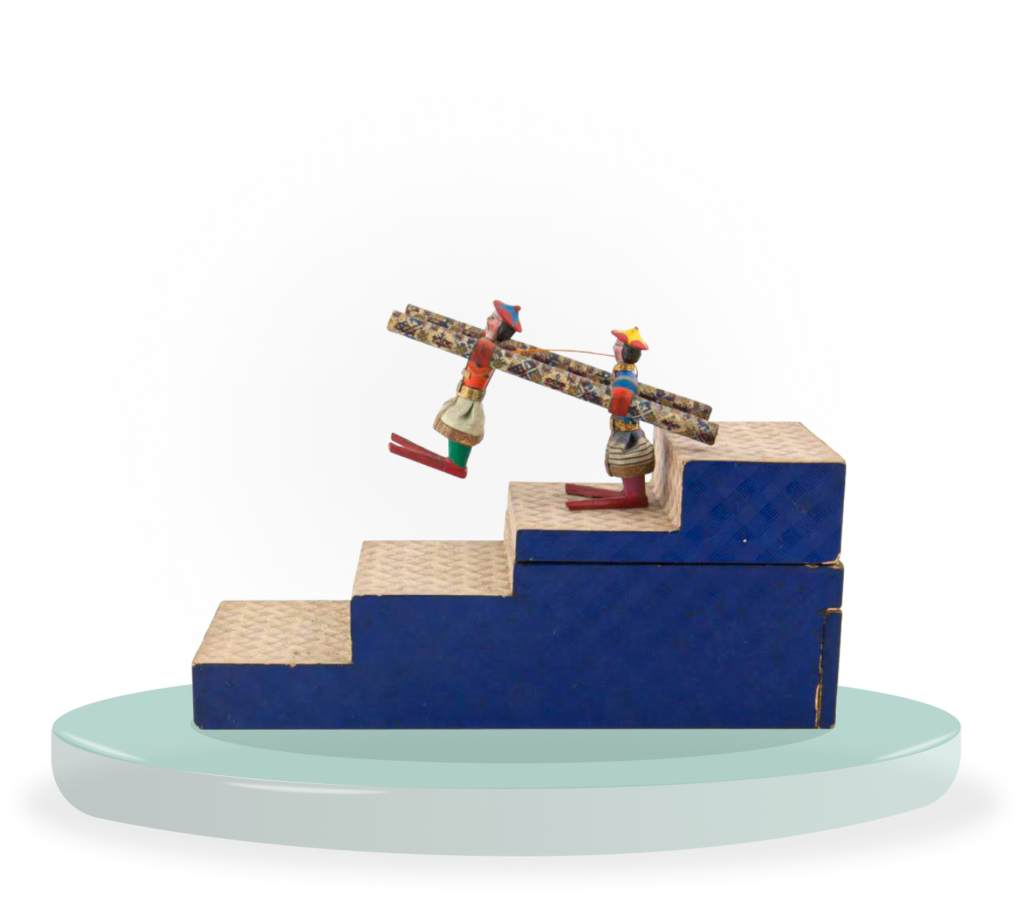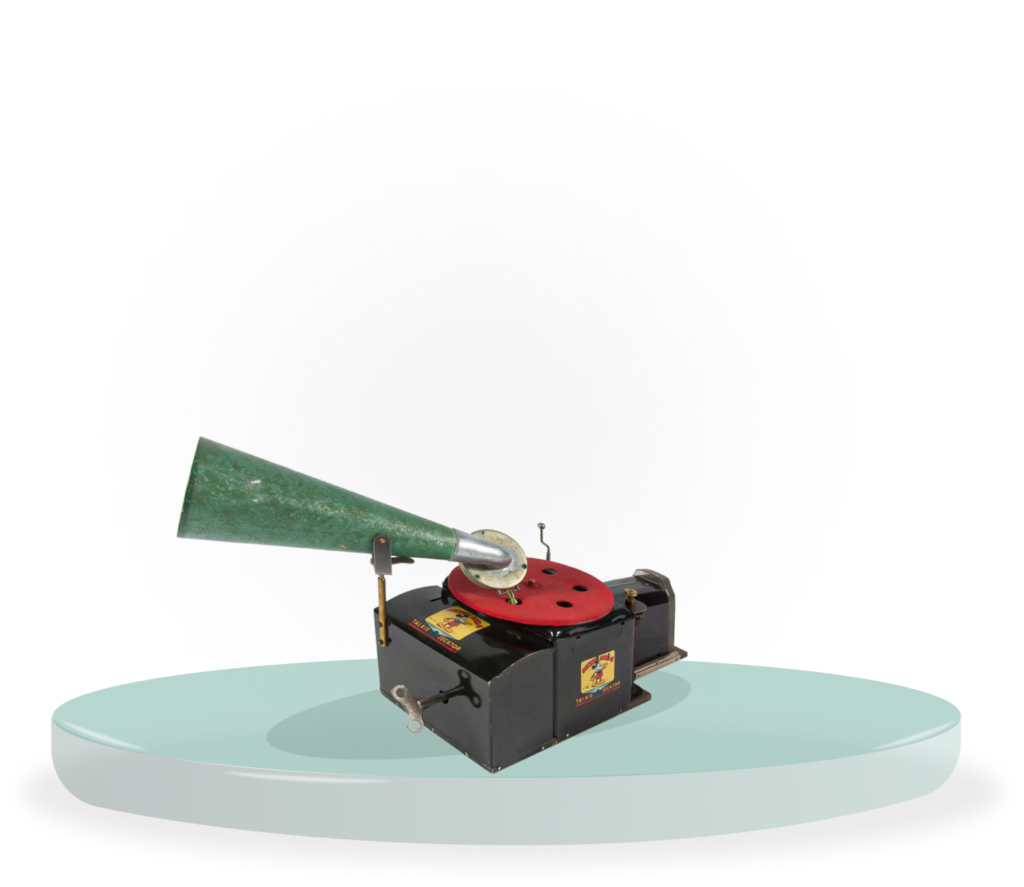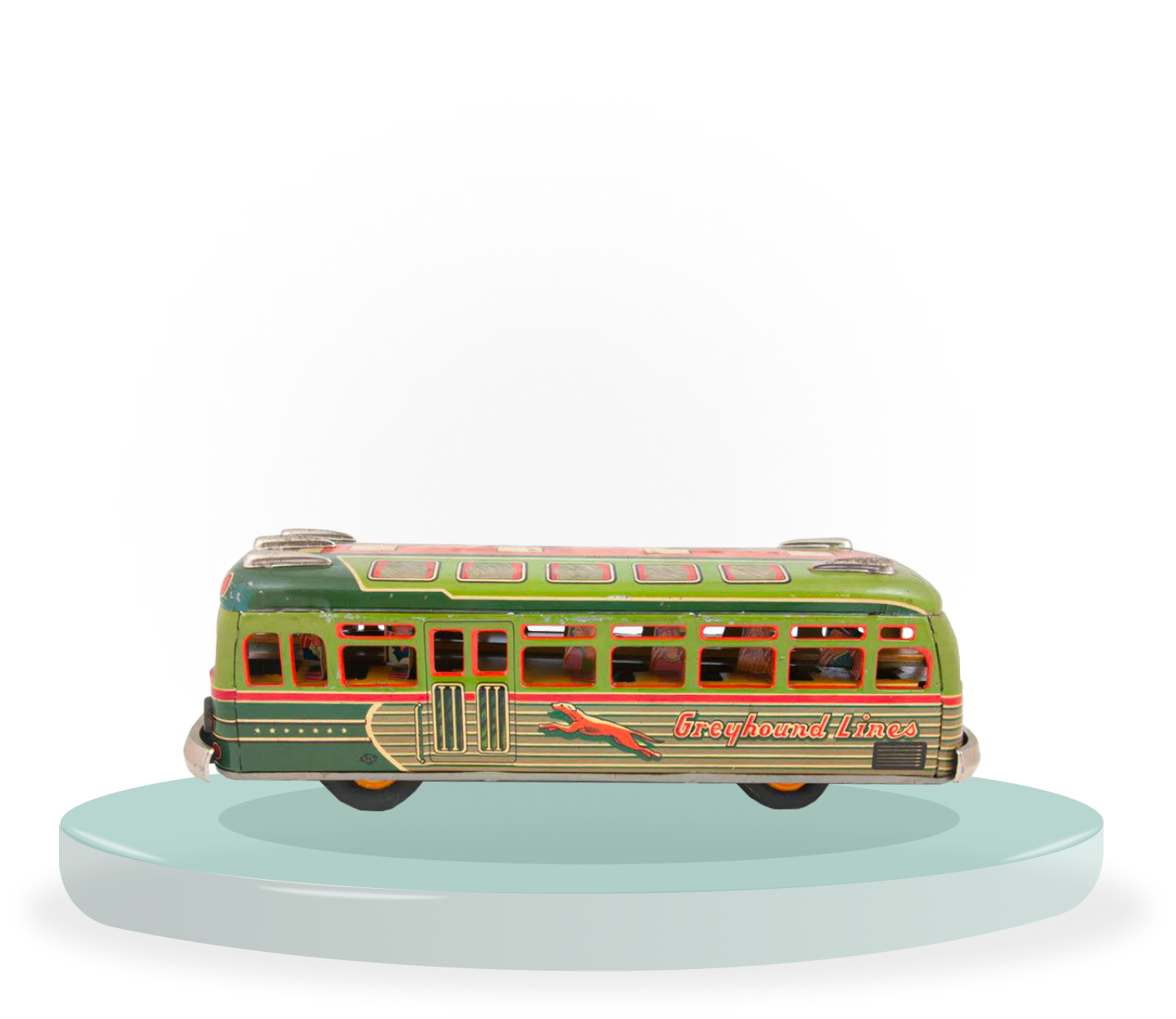
The motivation behind collecting toys may be a mystery to many. However, in the perspective of an avid collector, vintage toys are more than just mere economic investments. Although some highly sought-after vintage toys can rack up high prices in auctions, collectors may choose to safeguard their toys for sentimental reasons. Oftentimes, vintage toys can invigorate a sense of nostalgia and perhaps allow the collectors to relive their childhood memories. While the hunt for rare and valuable vintage toys can be thrilling, collectors may also consider vintage toys as artefacts that document events in history and give us an insight into our culture and heritage.

The exhibition explores the wide array of vintage toys beginning from the collection of Early Toys and Traditional Folk Games which evokes a sense of nostalgia to the golden age of toys during the Industrial Revolution. Following the mass production of toys since the industrial revolution, the exhibition also showcases the impacts of Globalisation leading to the Commercialisation of toys. In addition, the exhibition will also investigate how toys can document History and become catalysts for Political movements in the past.


The toys and games we have come to know today are often embedded in digital devices. However, during our grandparents era, many were wrought out of pure imagination. Since most of the working-class were unable to afford industrial-made imported toys, children would often create their own games using household items. Today, these toys and games are fondly remembered as ‘kampong games’.
Under the collection of Early Toys & Traditional Folk Games, our collection highlights the commonly played toys and games during the ‘kampong era’ such as Marbles, Spinning Tops, Kites and Board Games.

Board Games
Board games boast a beginning that dates back to prehistoric times and have existed long before written language was invented. The earliest gaming piece found was a dice – an essential piece to every modern board game we have today. The earliest gaming tokens were found in a grave site at Başur Höyük. This series of 49 small, carved painted stones is believed to be from 3,100-2,900 BCE, making them roughly 5,000 years old.
Such dice games eventually developed into board games, offering slightly complex rules, varying components and different cultural nuances. The earliest recorded board game is the Senet, believed to be played in predynastic Egypt. The Senet board features a grid of 30 squares in three rows of ten and is played with two sets of pawns. As strong believers in the concept of fate and divinity, it was believed that successful players were protected by gods, including the god of the afterlife – which explains why it was so often placed within tombs. The same spiritual element is seen in Snakes and Ladders, a game that goes back as far as 200 BC as an Indian kids game that teaches about mortality and the difference between good and evil.
One of the oldest board games still played today is Backgammon, a two-player game where each player has fifteen pieces (checkers) that move between 24 triangles (points) according to the roll of dice. The object of the game is to bear off all of one’s checkers before the opponent does. This ancient game experienced a resurgence in popularity in the mid-1960s in part due to Prince Alexis Obolensky, and now there are tournaments, communities, and organisations dedicated to playing the game.
Board games are still relevant today, with new renditions of old games and some entirely new ones, played by the young and the young at heart.

Snakes and Ladders
Row 1 Shelf 1
In 1944, producer Leon Schlesinger sold the rights to his “Looney Tunes” and “Merrie Melodies” characters to Warner Bros, who immediately began producing licensed merchandise which proudly bore the new copyright – “Warner Bros. Cartoons.”
This 1940s “Bugs Bunny” doll was one of the first Bugs Bunny dolls to ever be released by the Warner Bros. This style of doll – which depicts the rabbit in a brightly coloured body suit with a felt collar, holding a stuffed carrot – was a common design that was reproduced by companies such as M & H Novelty Corporation and Marben Limited. Many other colours and sizes were produced, including pink, white, blue, and yellow variations.
What sets the museum’s copy of this doll apart from others’ are the two signatures on Bugs Bunny’s torso, provided by Bob Clampett and Tex Avery. Together, Clampett and Avery were responsible for creating Bugs’ iconic design and quick-witted personality, and Avery is credited with writing his well-known catchphrase, “What’s up, Doc?”

Snakes and Ladders
Maker
Year of Make
Material
Country of Origin
Berwick’s Toy Co. Ltd
1950-1959
Cardboard
United Kingdom

Before the industrial revolution in the 19th century, toys were laboriously handcrafted and handed down as heirlooms in the family. Even for wealthy families, it was uncommon for children to own more than one toy. However, by the late 19th century, the industrial revolution marked the progressive transition of handicraft economy to machine manufacturing. With the widespread use of machineries in factories, toys of a variety of materials were now mass produced and became very affordable.
Under the collection of Industrial Revolution, our collection explores the impact of the industrial revolution in the toy industry. The collection will chart through the timeline of materials, functions and types of toys produced since the late 1800s ranging from Wood, Celluloid, Lithographed Tin, Die-cast and Plastics.

Wood
Wood is one of the oldest materials and is closely associated with the development of mankind. Wooden toys first appeared during the ancient Greek and Roman empires. Archaeological findings include a variety of dolls, horses, and chariots that were all carved from multiple single pieces of wood that could be slotted together. The making of these toys required exquisite craftsmanship and intense labour. Each toy was hand-made and, as such, could be tailored to choice. As such, high-quality wooden toys were often an item of luxury.
By the 1700s, technological advancements during the Industrial Revolution made it possible for German toymakers to craft a variety of wooden toys to sell to the public. Salesmen would travel around Europe to market their products, taking advance orders for special occasions and often for custom wooden toys. Over the next century, the art of toymaking became more precise, detailed, and elaborate. Manufacturers began producing toys like dollhouses, theatres, wooden trains along with their wooden tracks. During this time, one of the famous wooden toys was the Peg doll, a wooden doll that featured wood joints in the arms and legs. They were particularly popular among low-income families as they were sold undressed, which would allow children to make their own clothing from discarded and unwanted scraps of fabrics.
Post-World War II marks the introduction of new chemicals to the manufacturing industry, including the ever-popular thermoplastic. As toy manufacturers shifted to cheaper and modern materials, the popularity of wooden toys’ saw a drastic decline. Today, they are rarely seen in traditional toy stores, but their charm and appeal are slowly paving the way for their comeback in recent years.

Chinesische Treppenläufer (Chinese Stairs)
Row 2 Shelf 5
When ore deposits in Germany’s Erzgebirge region began drying up in the 17th century, miners turned to another abundant resource – lumber. Many adopted woodcarving as a new trade, founding a regional toymaking industry which produced toys such as this set of Chinese Stairs.
The toy is powered by mercury inside the rods carried by the figures. When mercury flows to the bottom of the rod, this shifts the toy’s centre of gravity, lifting the rear figure upwards and creating the illusion that the figures are climbing down the stairs. The “Chinese” figures are dressed in gold-embroidered costumes, and the stairs are decorated with an Oriental pattern.
This toy showcases the skilled craftsmanship of Erzgebirge toymakers and defies expectations of what wooden toys can achieve, elevating them from the realm of simple figurines to one of complex, innovative mechanisms. It also offers insight into Orientalist depictions typical of the 19th century.

Chinesische Treppenläufer (Chinese Stairs)
Maker
Year of Make
Material
Country of Origin
Unknown
c.1840
Wood
Germany

Following the industrial revolution and the ease of international travel, mass produced toys were now easily traded between countries. With such a platform to exchange culture and ideas, imported toys can now be duplicated locally albeit slight modifications. Since patenting toys were uncommon and difficult to enforce, many similar toys began appearing in the market around the world.
On the upside of globalisation, international collaboration between toy manufacturers and commercial businesses was now possible. The function of toys were no longer just playthings for children but also effective merchandises, especially for the entertainment industry. Such merchandise toys became so successful that it gradually became the profit-making backbone of the industry.
Under the collection of Globalisation & Commercialisation of Toys, our collection will investigate the origins and Globalisation of Climbing Monkey in the sea of duplicates as well as to document the Commercialisation of toys through Mickey Mouse Merchandises.

Commercialisation of Mickey Mouse Merchandises
When Mickey Mouse first appeared on screen in Hollywood’s first comedy short film with sound in 1928, nobody would have guessed that it would be one of the iconic figures in entertainment history, much less survive for almost an entire century. As the popularity of Mickey Mouse began to soar in the early 1930s, Walt and Roy Disney were confronted with the challenge of meeting the explosive demand for engaging consumer products.
In the same year, an enterprising seamstress by the name of Charlotte Clark was able to design the first stuffed Mickey doll. After obtaining a license from the Disney brothers, Charlotte began to sell her homemade dolls in retail stores. By November 1930, the production reached three to four hundred dolls per week. Eventually, Charlotte turned over the pattern of the Mickey doll for mass production and turned to creating personalised Mickey Mouse dolls instead.
In 1932, Mickey toy merchandising was given over to Kay Kamen and under his supervision, the line of merchandise began to expand. They included tea sets, handcars, figurines, trains, pull toys, games and more. One of the must-haves was the Mickey Mouse pocket watches and wristwatches – the Ingersoll-Waterbury clock company would later say that these watches had saved them from bankruptcy.
Since then, Mickey Mouse’s design has evolved and the cartoon has taken a different look altogether. While they may look different from the memorabilia that you are accustomed to seeing today, they still incite the same interest and joy for kids and collectors alike.
Mickey Mouse fans were not the only ones that were impacted by this popular cartoon. In the macro sense, these merchandises not only further cemented their brand as an animation, but they had also transformed the toy industry as a whole. Pop culture and toys slowly became even more intertwined such that hit series and movies of today will almost always produce their own toy collections.

Mickey Mouse Talkie Jecktor
Row 11 Shelf 4
By the early 1930s, black-and-white television had already been invented, but such early systems were far from suitable for consumer use. The “Mickey Mouse Talkie Jecktor” Gramophone & Projector was a toy which proposed a method of bringing the magic of big-screen cartoons into one’s living room.
The machine projected movies using a roll of parchment film lit by an Edison light bulb, and the attached gramophone played a 78 rpm toy record in sync with the film as the roll advanced. In reality, however, many consumers found it difficult to manually sync the film with the record, and the Talkie Jecktor’s lofty promises unfortunately fell short in this regard.
Nonetheless, the toy captures the early stages of cinema, where synchronised sound movies, or “talkies”, were still a recent technological innovation; the novelty of bringing talkies into the home must surely have been an exciting idea for many consumers.

Mickey Mouse Talkie Jecktor
Maker
Year of Make
Material
Country of Origin
Talkie Jecktor Company
c.1930s
Metal
United States of America

Children’s toys can be considered as complementary artefacts that provide an alternative documentation to the historical and political narratives. In addition to documentation, toy manufacturers often produced toys to satirise the political landscape of the time. Particularly during times of war or crisis, toy companies were also commissioned by the government to produce propaganda toys in order to further their political agendas.
Under the collection of historical & political toys, our collection will include military toys made as a representation of the Second World War, a documentation of the Tumultuous Years of Modern China as well as memorabilia of the iconic Coronation of Queen Elizabeth II.

Tumultuous Years of Modern China
China has gone through a remarkable amount of change and progress in the last 100 years alone. From the founding of the Republic of China in 1912, to the Chinese Civil War lasting from 1927 to 1949, to the eventual establishment of the People’s Republic of China from 1949 onwards, the early years of modern China were full of countless sea changes that swept across the nation in quick succession.
A century later, one of the best ways to witness the rapid development of China during this time is through the various children’s toys that have survived over the years. These toys are a powerful reflection of the events that defined those tumultuous years, and are a testament to how everyday objects can reflect pivotal moments in history.
A common theme that features in toys from this period is the Cultural Revolution. The Cultural Revolution took place between 1966 to 1976, and was intended to institute Maoism as the dominant ideology in China through a purge of capitalist and traditional elements. There was an emphasis on militarisation via joining the People’s Liberation Army (PLA) and an encouraged return to provincial lifestyles during this period, reflected in toys such as the Cultural Revolution Miner and Cultural Revolution Soldier.
Following the Cultural Revolution, other notable events in modern China’s history include the opening of China from the 1970s onwards, the 1986 Chinese student demonstrations and subsequent Tiananmen Square protests, and the inclusion of Hong Kong and Macau as Special Administrative Regions under the “One country, two systems” principle. Throughout all of these landmark events, children’s toys have continued to reflect the changing circumstances in the country, allowing us to chart our way through history via the simplicity of these everyday objects.

East is Red Tractor
Row 14 Shelf 2
In the early years of the People’s Republic of China, heavy industrial equipment was one of the most common subjects in children’s toys. In a bid to achieve self-sufficiency and reduce dependency on foreign imports, the state encouraged industrial and agricultural activity; industrial motifs soon made their way into the lives of children’s playthings.
This “East Is Red Tractor” toy is modelled on the Dongfanghong (东方红) 54 crawler tractor – the first tractor produced in postwar China – which was in itself a copy of the Soviet DT-54 chain tractor. The toy is battery-powered and comes with a wired remote control device, which moves the tractor forward and backward, as well as left and right.
During the Cultural Revolution, these machines occupied the dreams and ambitions of many children, who aspired to be tractor drivers when they grew up. As such, these toys serve as powerful material representations of China’s hopes for the future during the Cultural Revolution.

East is Red Tractor
Maker
Year of Make
Material
Country of Origin
Unknown
c.1960s
Lithographed Tin, Plastic, Celluloid and Rubber
China

Apart from being mere playthings, toys can also be an object of documentation for social and cultural issues of the past. Since social and cultural issues were widespread and part of the mainstream culture, toy manufacturers often produce toys that perpetuate these discriminations. On the other hand, there are also independent toy makers who produce and sell toys to combat discrimination and support social causes. Such toys will encourage us to reflect on our diverse community and advocate for a better society.
Under the collection of social & cultural toys, our collection of toys will dive deep into the Refugee Crisis of Hong Kong through Micale Lee’s hand-sewn dolls as well as the racial segregation and the beginnings of the Civil Rights Movement in the United States through a collection of golliwogs and racial toys.

In exhibiting this collection, MINT Museum of Toys recognises that children’s games and toys illuminate the cultural consciousness and social mores of prevailing society. The collection also reminds us that in play, children display behaviour and repeat actions that have made impressions on them in early life. Freud famously observed that children absorb “the strength of the impression” and in doing so, render themselves “master of the situation.” The significance of toys in perpetuating sexist attitudes, class segregation and racial stereotypes has been widely studied and acknowledged. While our collection bears testimony to the progress we have made in the fight against discrimination, we are well aware that some of our visitors may feel aversion or discomfort, and we seek your understanding in why we are bringing this exhibition into the public eye.
Throughout history, there have been movements to abolish racism and discriminatory behaviour. Beginning in the 1920s and especially during the 1950s and 1960s, which led to the abolition of Jim Crow or racial segregation laws, the work of activists changed attitudes, generated discussions and actively influenced many other anti-discriminatory efforts.
The first toy in the collection is based on a character who appeared originally in the late 19th century, in the illustrations of Florence Kate Upton. She drew the golliwog, as it became known, with black skin, frizzy hair, white-rimmed eyes, and smiling with exaggerated red lips. This was the typical makeup of a blackface minstrel – who was usually a white person in make-up (called blackface) playing a black person in a comic sketch, dance, or musical performance.
Golliwogs became popular in the UK, Australia, other parts of Europe, and in the source of its origin, the United States. Other racial toys in the same vein soon followed, such as Sambo, Aunt Jemima, and Uncle Moses; and they also make an appearance in our collection. Some of them may still exist as brand icons, but many have been removed or updated.
MINT Museum of Toys believes that in displaying these items, we raise the awareness of discrimination and initiate discussions on prejudicial behaviour and practices. Modern museums are not just repositories of preserved artefacts but act as an informative lens on human history, as well as being a force for education and shaping societal attitudes.

Greyhound Lines
Row 17 Shelf 2
Marusan was founded in Asakusa, Tokyo, in 1947 by brothers Haruyasu and Minoru Ishida, and their brother-in-law, Yasuo Arai. Although the business began as a toy wholesaler, Marusan eventually began to design and produce their own tin and celluloid toys, many of which were made to the specifications of toy distributors in Europe and America.
“Greyhound Lines” was one such toy that was destined for export to western countries. Produced between 1955 to 1959, the friction-powered lithographed tin toy captures an everyday scene for many Americans at the time – passengers riding a Greyhound bus.
More importantly, the toy also captures problematic aspects of everyday reality namely, the policy of racial segregation on public transportation, as it depicts white passengers seated at the front of the bus, while an African-Americans were to be seated at the back of the bus.
This policy was famously protested against by Rosa Parks, an American activist in the civil rights movement best known for her pivotal role in the Montgomery bus boycott. On December 1, 1955 in Montgomery, Alabama, Parks rejected bus driver James F. Blake’s order to vacate a row of four seats in the ‘colored’ section in favor of a white passenger.
She was arrested for civil disobedience in violating Alabama segregation laws and she helped inspired the Black community to boycott Montgomery buses for over a year. Park’s act of defiance and the Montgomery bus boycott became important symbols of the movement and she became an international icon of resistance to racial segregation, collaborating with civil rights leaders including Martin Luther King Jr.

Greyhound Lines
Maker
Year of Make
Material
Country of Origin
Marusan
c.1955–1959
Lithographed Tin and Rubber
Japan

